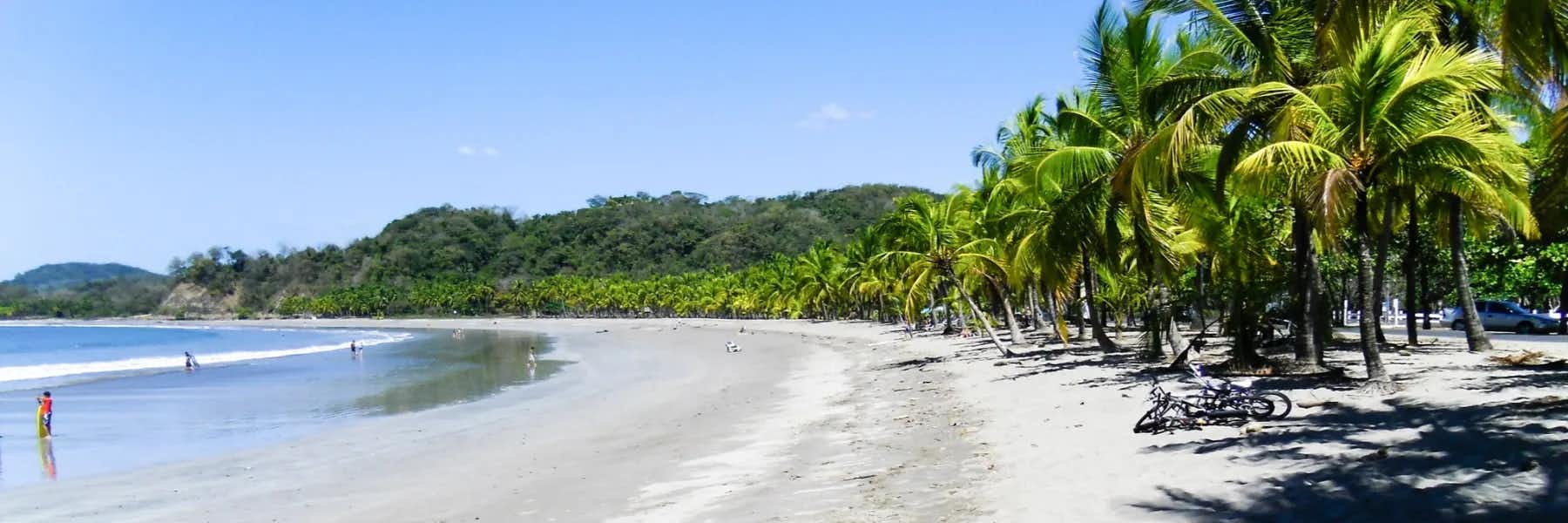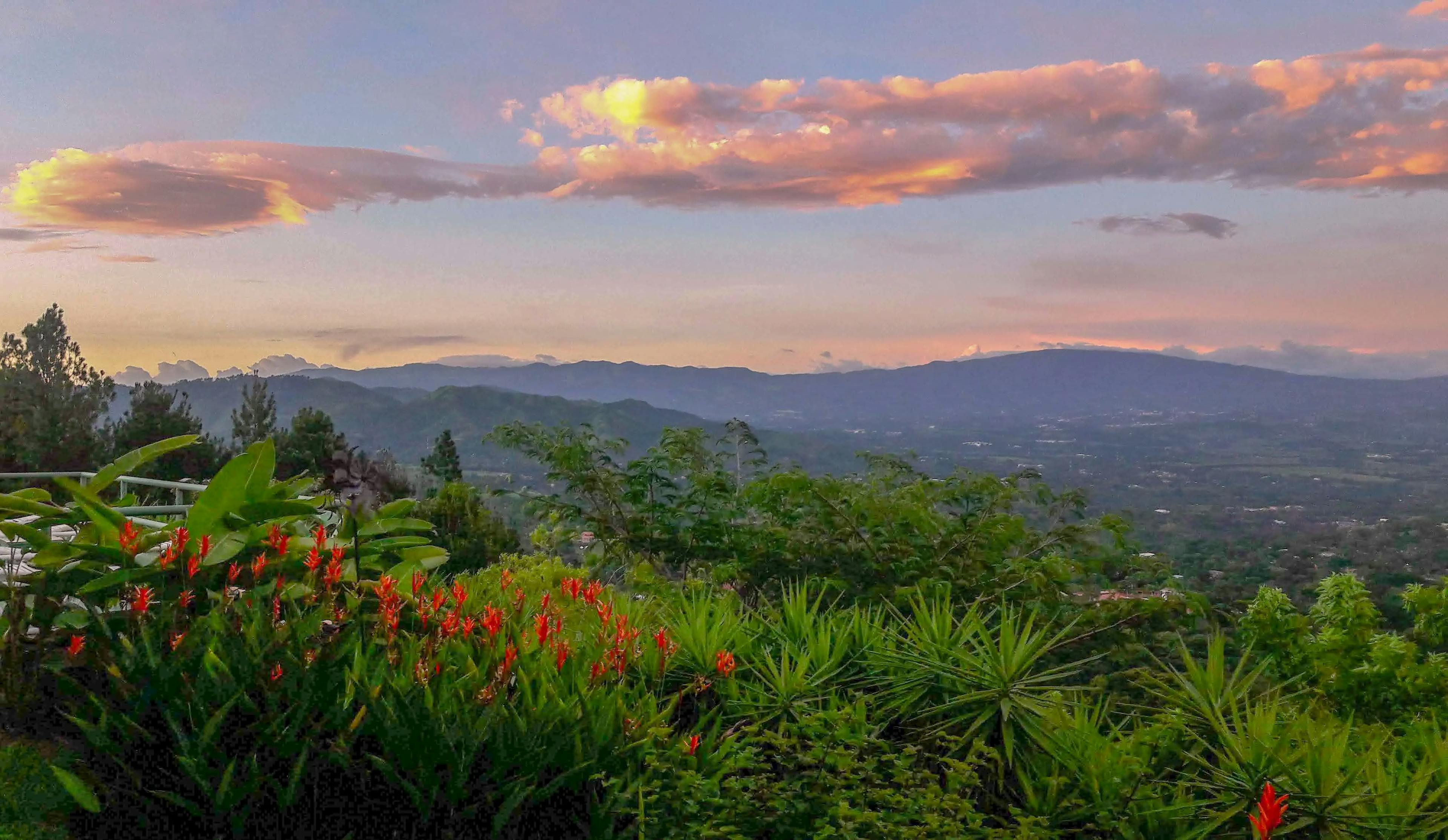Ask anyone who's ever visited Costa Rica what they think of it—and most will tell you it was love at first sight.
Costa Rica is home to countless expats who bought property in Costa Rica in their 50s and 60s... based on fond memories of surf trips and wildlife adventures when they were decades younger.
They might have traveled with little comfort in their younger years, roughing it in cheap hostels and beat-up buses...but when it comes to a second home in the country, their older, more experienced, and better-heeled selves often want a touch of luxury.
If you're dreaming of a place where you can escape for vacations with family and friends, a retreat where you can ride out the cold winters back home, or your goal is a second home that can deliver good returns—you'll find it in Costa Rica.
Free Access: Retire to Costa Rica Summit
Free Access: Retire to Costa Rica Summit
Join Us to Discover What Makes Costa Rica the Easiest Place on the Planet to Retire... and One of The Most Desirable Retirement Havens, too. You’ll see how you could join more than 70,000 Americans—many of them retirees, and those seeking an early retirement, but also families, veterans, couples, and singles that have already found Pura Vida (the Good Life) in Costa Rica.
Sign up for our free daily postcards, and you'll receive complimentary access to our Costa Rica Summit PLUS our latest research reports.

By submitting your email address, you will receive a free subscription to IL Postcards and special offers from International Living and our affiliates. You can unsubscribe at any time, and we encourage you to read more about our Privacy Policy.
Guide to Buying Real Estate in Costa Rica
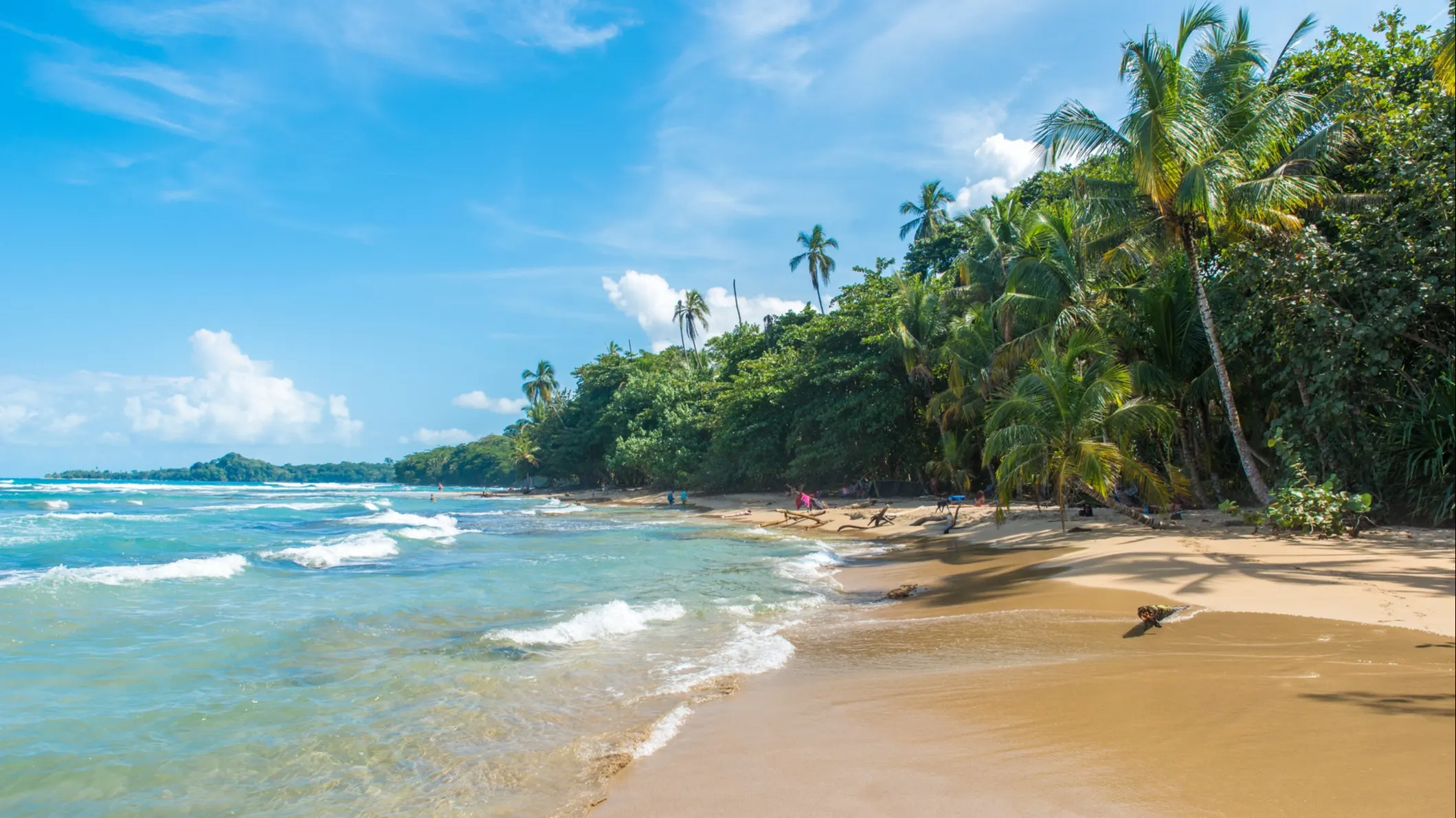
Are There Any Buying Restrictions for Costa Rican Real Estate?
There are no restrictions on foreign property ownership in Costa Rica. However, no one can own property within 50 meters (164 feet) of the ocean (to allow public access to beaches), and the next 150 meters (492 feet) is classed as a Restricted Zone.
There are exceptions to this—some parts of Jaco and Golfito, for example, have titled waterfront and beachfront land, but these are the exception rather than the rule.
Maritime Zone laws govern these 200 meters of beachfront. Nothing can be built in the 50 meters (164 feet) closest to the water and development is only allowed on the next 150 meters (492 feet) through a government “concession.” This is like a lease (although buyer beware, it is not a secure form of leasehold that you may be used to back home…and there are restrictions on foreigners with these concession leases (it becomes easier if the foreigner has been resident in Costa Rica for more than five years).
You are normally only allowed to build tourist ventures (B&Bs, bars, for example) or temporary structures on concession land, not permanent residences. This means that anyone shopping for property should be doubly cautious about buying oceanfront real estate. Before entering a transaction, insist that your attorney verify that the title is good. Check with a trusted attorney in Costa Rica for details and for help with due diligence on coastal properties.
What Kind of Title Issues Could Occur When Buying Real Estate in Costa Rica?
Costa Rican law requires that all documents relating to an interest and/or title to property be registered in the property section of the National Registry. Most properties have a title registration number known as the folio real, and the records database can be searched with this number or by name index.
A National Registry report provides detailed information on the property, including the title holder's name, boundary lines, tax appraisal, liens, mortgages, recorded easements, and other recorded instruments that would affect the title.
Since Costa Rica follows the doctrine of “first in time, first in right,” recorded instruments presented to the National Registry are prioritized according to the date and time they are recorded.
Basically, the rightful owner is whoever has the oldest title to a property. In some cases, a review of the National Registry record will not be enough to uncover all encumbrances.
Even if the seller has a title for the property, there could be someone out there with an older claim.
That is why the buyer needs to have his or her own attorney conduct an independent title search and investigation rather than rely on the seller’s attorney.
What You Should Know About Costa Rica Title Insurance
Title insurance is not currently available in Costa Rica. This is why it’s vital you find a good attorney who will do a thorough title search for you.
RETA members who buy in Costa Rica (and anywhere else) have the peace of mind that comes from knowing that extensive due diligence has been carried out for any Costa Rica real estate opportunity they receive.
How to Check Costa Rica Property Titles Yourself
All property titles in Costa Rica can be found at the National Registry site. It’s in Spanish, but the process of searching for titles is straightforward.
A detailed guide on how to use the National Registry site to search for titles can be found here.
Property Tax Registration in Costa Rica
While your property deed is recorded in the National Registry, you pay your property taxes at the municipal government office, closest to where your property is located.
Many buyers assume that the local property tax information will be automatically updated with the recording of the deed in the National Registry. Still, the buyer should file a copy of the property transfer deed directly with the local municipal government office themselves to ensure the records are updated.
The Cost of Closing a Real Estate Deal in Costa Rica

Who Pays Closing Costs in Costa Rica?
In Costa Rica, closing costs are traditionally paid by the buyer, while the seller pays the real estate commissions.
Closing costs in Costa Rica tend to be higher than in the United States or Canada. However, annual property taxes are much lower, ranging from 0.25% up to 0.55% according to the value of the property.
What are the Closing Costs in Costa Rica?
Closing costs involve the following:
transfer taxes (paid to the government).
Notary fees, documentary stamps, and legal fees.
VAT/IVA costs.
How are Property Taxes Calculated in Costa Rica?
The cost of all property taxes is calculated as a percentage of the property’s value.
The value of the tax is 0.25% of the purchase price of your property, or the value assigned by the National Registry.
As an owner, you are responsible for having your home’s value assessed every five years. Failure to do this could result in a penalty.
What Homes in Costa Rica Have to Pay Luxury Tax?
For properties that are valued at 126 million colones or more, (about $247,073 at the current exchange rate), a luxury property tax must be paid. The tax rate is on a sliding scale, ranging from 0.25% to 0.55%. This tax is in addition to the annual property tax of 0.25% and equates to roughly $250 to $500 per $100,000 of your declared property value.
How Much is the Real Estate Transfer Tax in Costa Rica?
The government collects a property transfer tax (Impuesto de Traspaso), equal to 1.5% of the registered value of the property. The National Registry will not record a transfer deed unless the transfer taxes and documentary stamps have been paid.
Free Access: Retire to Costa Rica Summit
Free Access: Retire to Costa Rica Summit
Join Us to Discover What Makes Costa Rica the Easiest Place on the Planet to Retire... and One of The Most Desirable Retirement Havens, too. You’ll see how you could join more than 70,000 Americans—many of them retirees, and those seeking an early retirement, but also families, veterans, couples, and singles that have already found Pura Vida (the Good Life) in Costa Rica.
Sign up for our free daily postcards, and you'll receive complimentary access to our Costa Rica Summit PLUS our latest research reports.

By submitting your email address, you will receive a free subscription to IL Postcards and special offers from International Living and our affiliates. You can unsubscribe at any time, and we encourage you to read more about our Privacy Policy.
What Documentary Stamps are Required?
The government requires that the following documentary stamps be affixed to the deed.
Municipal Stamp (Timbre Municipal)
Legal Bar Association Stamp (Timbre del Colegio de Abogados)
Agricultural Stamp (Timbre Agrario)
National Archives Stamp (Timbredel Archivo Nacional)
Fiscal Stamp (Especie Fiscal).
The National Registry also imposes its own tax of 0.5% on documents presented for recording to the National Registry (Derechos de Registro).
What are the Notary Fees in Costa Rica?
The notary who drafts the contract for sale, carries out the real estate closing, and records the property title transfer is entitled by law to a fee based on a percentage of the value of the transaction.
The rates work on a sliding scale and are as follows:
Up to 10,000,000 colones is a 2% fee.
10,000,001 to 15,000,000 is an additional 1.5% fee.
15,000,001 to 30,000,000 is an additional 1.25% fee.
30,000,001 and above is an additional 1.00% fee.
How Much VAT is Added to Costa Rica Real Estate Purchases?
A 13% VAT is added to all legal fees when buying real estate in Costa Rica. VAT is known in Costa Rica as IVA, and is added to all services in Costa Rica, not only real estate.
The VAT/IVA is paid directly to the government.
What are the Real Estate Laws in Costa Rica?
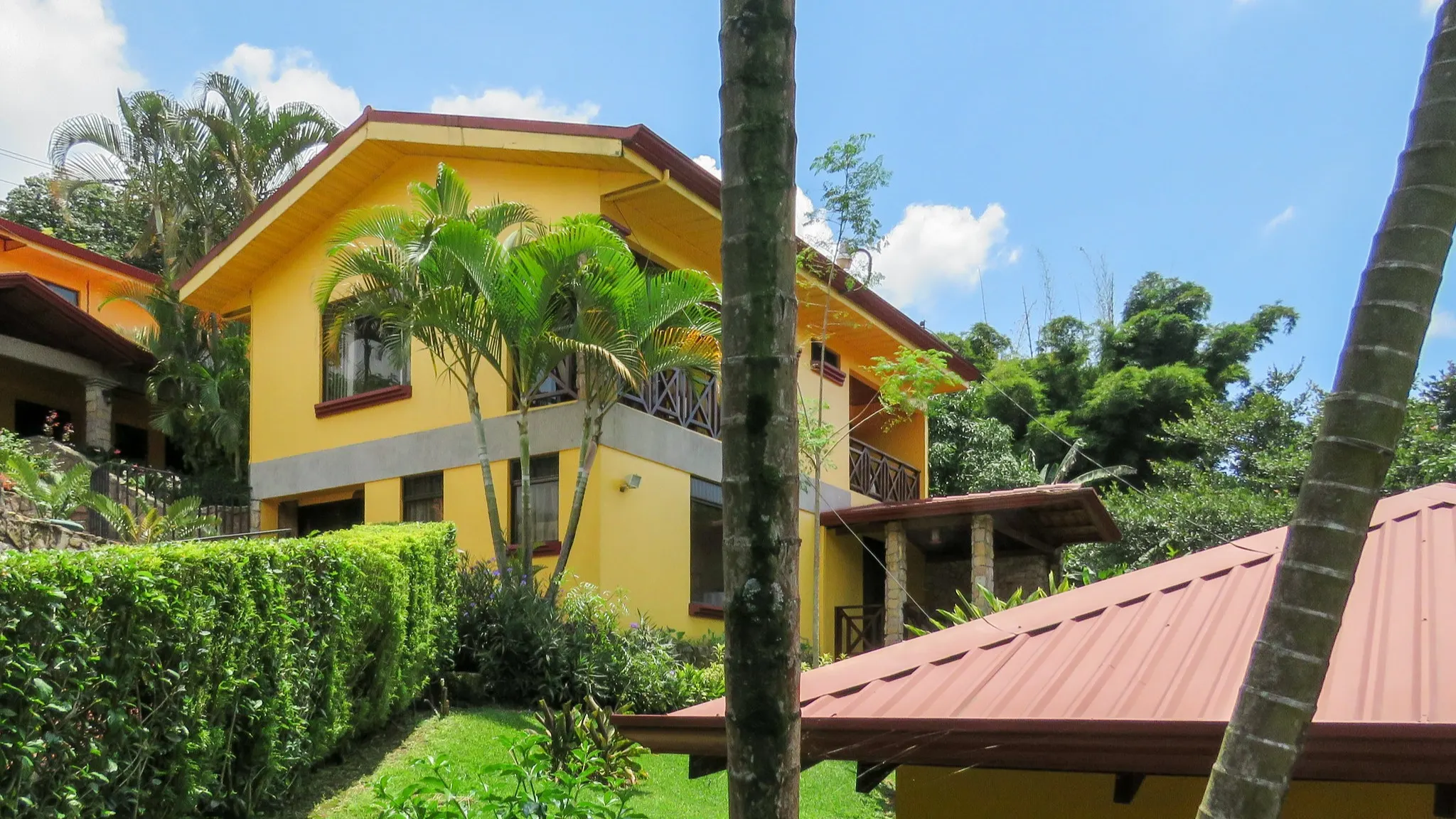
In Costa Rica, foreigners are given the same real estate ownership rights as Costa Ricans.
In addition to the laws protecting beach access, and the maritime zone mentioned earlier, there are some other real estate laws unique to Costa Rica which you should be aware of before buying real estate in Costa Rica.
Titled Ocean-front Property
In 1976, all owners of ocean-front land were required to register the land with the local and national public registry offices. In return, they were given full title to the land, despite it being within the 50-meter zone.
While most homeowners registered, some did not. If you want to buy an ocean-front home in Costa Rica, ensure it comes with this title, or you could be in for problems down the line.
Frontiers
Only Costa Ricans can purchase land within two kilometers of a national border. Foreigners cannot buy in these zones.
How Much Does the Average House Cost in Costa Rica?
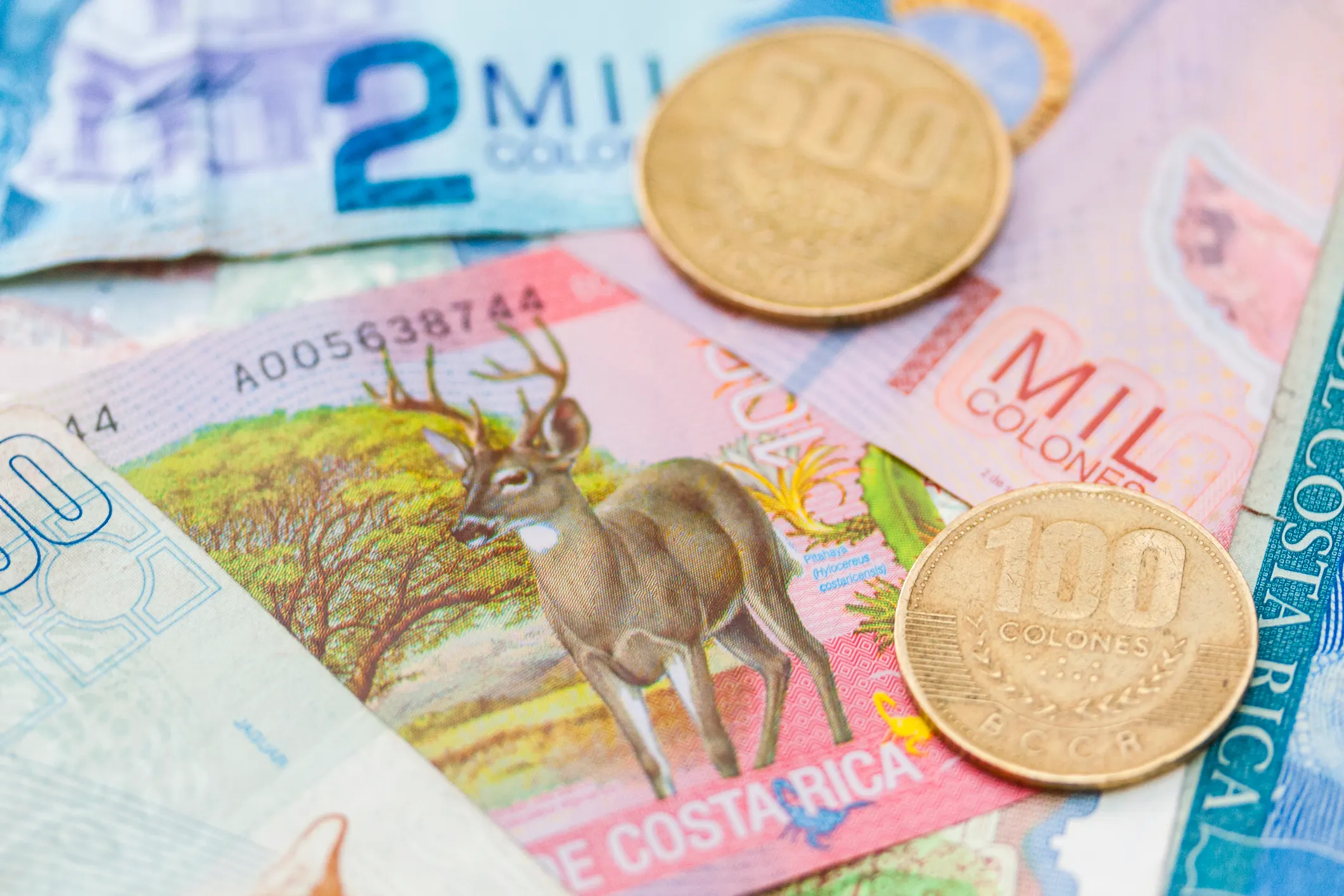
According to the latest information from the popular real estate platform Properstar.com, the average house price in Costa Rica is listed below. The numbers are accurate as of March 2024.
The average price for a house in Costa Rica is CRC 991,166/m² - which converts to US$1,929/m² or $179.20 per square foot.
The average price for an apartment in Costa Rica is CRC 1,181,258/m² - which converts to US$2,298/m² or $213.50 per square foot.
Where are the Most Expensive Real Estate Locations in Costa Rica?
| Apartments price per m² (CRC) | Apartments price per m² (USD) | Apartments price per square foot (USD) | Houses price per m² (CRC) | Houses price per m² (USD) | House price per square foot (USD) |
| CRC 2,279,331 | $4,435 | $412 | CRC 1,749,978 | $3,405 | $316 |
| CRC 1,126,298 | $2,192 | $204 | CRC 843,017 | $1,640 | $152 |
| CRC 1,429,456 | $2,781 | $258 | CRC 1,375,816 | $2,677 | $249 |
| CRC 805,277 | $1,567 | $146 | CRC 856,231 | $1,666 | $155 |
| CRC 1,003,183 | $1,592 | $148 | CRC 716,575 | $1,394 | $130 |
| CRC 945,318 | $1,839 | $171 | CRC 1,345,545 | $2,618 | $243 |
| Not enough listings | Not enough listings | Not enough listings | CRC 587,757 | $1,144 | $106 |
The Best Places to Buy Real Estate in Costa Rica
Arenal

With a tranquil location easily accessed from Costa Rica’s two international airports (Liberia and San José), Arenal boasts a 33-square-mile lake surrounded by hills and volcanic peaks. The setting is stunning. But while you might expect to see the lake packed with day trippers and tourists, it’s often surprisingly empty.
That’s because most of the tourists to this region are either heading to Monteverde Cloud Forest, which is nearby…or they stay on the east side of the lake, in the town of La Fortuna, which is famous for its hot springs.
That means the west side of the lake, dotted with little lakeside villages and communities, is overlooked. There is an upside, though—you can bag a lake-view property without breaking the bank.
The biggest towns on the west side of the lake are Nuevo Arenal and Tilarán. Nuevo Arenal has a bank, grocery stores, a clinic, a gas station, bars, and cafes. The famous German bakery is a good spot for lunch, serving bratwurst, sandwiches, fresh pretzels, and apple strudel.
Dotted around the lakeshore road, you’ll see little hand-painted signs for eateries. You can eat New York steak, local-style rice, and beans, barbeque chicken, pizza, home-made pasta, or burritos…or just stop for a rich Costa Rican coffee with a macadamia-nut muffin, warm from the oven.
During the day, residents often enjoy fishing in the lake, horseback riding, gardening, or hiking in the forest. With the constant spring-like climate, it’s comfortable to be active and outdoors any time of year. There’s a small but active group of long-term expats who often meet at a local eatery or share a pot-luck dinner at home.
The area around Nuevo Arenal is attracting expats interested in making permanent homes there. Everything from luxury properties to more affordable but still beautiful homes are available. And many homes offer panoramic lake views.
Lake Arenal is not for everyone—the pace of life is slow. But it's worth a closer look if you’re looking for a quiet retreat with a small but active expat community and plenty of get-togethers.
Free Access: Retire to Costa Rica Summit
Free Access: Retire to Costa Rica Summit
Join Us to Discover What Makes Costa Rica the Easiest Place on the Planet to Retire... and One of The Most Desirable Retirement Havens, too. You’ll see how you could join more than 70,000 Americans—many of them retirees, and those seeking an early retirement, but also families, veterans, couples, and singles that have already found Pura Vida (the Good Life) in Costa Rica.
Sign up for our free daily postcards, and you'll receive complimentary access to our Costa Rica Summit PLUS our latest research reports.

By submitting your email address, you will receive a free subscription to IL Postcards and special offers from International Living and our affiliates. You can unsubscribe at any time, and we encourage you to read more about our Privacy Policy.
RETA Real Estate Expert Ronan McMahon’s Advice on Buying Real Estate in Arenal
Arenal is a tranquil, rural area in Costa Rica’s northwest that’s got enormous appeal. The landscape is magnificent—green hills around a huge lake, with volcanic peaks towering in the background. The lakeshore road meanders around the lake with photo opportunities at almost every turn. There are small, local villages scattered along the lakeshore road, as well as restaurants and cafés where you can stop for a bite to eat.
RETA used to recommend lake view lots as a good investment in Arenal, but they’re becoming harder to find.
Today, the best deals in Arenal come from motivated sellers. This could be as simple as someone who needs money fast.
It could also be someone who built a big and extremely personal home to their taste.
With taste being so subjective, highly personalized homes don’t appeal to most buyers, but the trick is to see through the decor, to the bones of the house.
Scouring the real estate listings in Arenal, I came across a house described as a “Unique Artist-designed home.”
Listed at $350,000, the three-bedroom house is on a 2-acre lot surrounded by lush jungle. There’s even a creek that runs through the grounds.
It’s fully fenced-in, and a haven for local wildlife. There are also an abundance of fruit trees, including avocado, mango, pineapple, banana, papaya, lemons, oranges, water apples, rose apples, and more.
It’s a great opportunity for the right buyer…
Another way to get a good real estate deal in Arenal is to look for homes with a significant parcel of land attached to them.
This allows you to divide the land into smaller lots, which can be sold individually.
This approach makes even more sense if you’re not planning to spend all year in your Arenal bolt-hole.
Playa Flamingo

Located in Costa Rica’s northwest Pacific coast, Playa Flamingo is part of the Guanacaste region.
Before Costa Rica's tourism boom, the northwest Pacific coast was an underdeveloped area of cattle ranches, secluded beaches, and world-class surf spots. For those seeking a relaxed beach getaway off main circuits, the region provided just that.
Reaching the picturesque coast had its difficulties—the road from San Jose was filled with potholes and in poor condition. The arduous drive lasted four to five bumpy hours. Other adventurous travelers would fly in via local puddle jumper planes that landed on crude runways and gave an early indication of the area's limited amenities.
However, savvy developers soon recognized the area's tourism potential. The Four Seasons invested over $200 million into a luxury project—carving hillside villa properties, an upscale golf course, and five-star hotel amenities from raw land.
The Four Seasons and major resorts like Hacienda Pinilla lobbied Delta Airlines, guaranteeing $3 million to offset operation losses in the case of low passenger demand. But flights filled rapidly. Soon, Continental and American launched competing routes as Liberia airport became viable.
With accessibility no longer a problem, the Guanacaste region underwent a swift transformation into a globally renowned vacation hub. Tourists could reach the picturesque beaches and rolling pastures in just hours - opening the floodgates to mass tourism and lucrative real estate opportunities.
Visit Guanacaste today, and you can stay in numerous fancy hotels with 5-star service and 5-star amenities.
The Four Seasons has since been joined by JW Marriott, Andaz, Ritz-Carlton, and the Westin. And money continues to pour in.
Free Access: Retire to Costa Rica Summit
Free Access: Retire to Costa Rica Summit
Join Us to Discover What Makes Costa Rica the Easiest Place on the Planet to Retire... and One of The Most Desirable Retirement Havens, too. You’ll see how you could join more than 70,000 Americans—many of them retirees, and those seeking an early retirement, but also families, veterans, couples, and singles that have already found Pura Vida (the Good Life) in Costa Rica.
Sign up for our free daily postcards, and you'll receive complimentary access to our Costa Rica Summit PLUS our latest research reports.

By submitting your email address, you will receive a free subscription to IL Postcards and special offers from International Living and our affiliates. You can unsubscribe at any time, and we encourage you to read more about our Privacy Policy.
RETA Real Estate Expert Ronan McMahon’s Advice on Buying Real Estate in Playa Flamingo
I believe that if you can find the right opportunity in Playa Flamingo you can see enormous returns on your real estate investment.
There are a couple of reasons for this.
One is that developable land in this part of Costa Rica is incredibly scarce. As well as the standard permits that you see in most countries—zoning, construction license, and water, Costa Rica has a couple of additional permits I haven’t come across anywhere else.
Which makes building accommodation for the millions of visitors extremely tough.
The second is that the “ordinary rich” are arriving. Think doctors, lawyers, executives, and work-from-anywhere folks. Since they’ve started arriving, real estate prices have been heating up.
The situation in Guanacaste reminds me of the trends I tracked in Cabo.
Cabo was once primarily a destination for Hollywood celebrities and the elite. Then the “ordinary rich” started coming in big numbers…
At RETA, we bought ahead of this trend in Cabo and saw some incredible uplifts.
$388,844 More—Our first RETA deal in Cabo was in 2015 in the five-star Quivira resort. Our RETA-only price on a two-bed, two-bath ocean-view condo in the best-in-class Copala community was $336,156. I bought one alongside RETA members. Last year, an identical condo to mine two floors above me listed for $725,000—an uplift of $388,844.
Boost of $212,400—In May 2022, we had a deal in a community called Monte Rocella. I bought two condos alongside RETA members in this deal. A condo that RETA members could buy for $272,600 was later listed for $485,000, which is $212,400 more.
Then there were our deals on luxury homes in Cabo, which the uplifts have also been spectacular…
$602,885 More—A RETA member bought a luxury villa in Copala, in the Quivira master-planned community, for $385,115 in 2017. I recently saw the same Copala villa listed for $988,000—that’s an uplift of $602,885.
$421,778 Uplift—Also in Quivira, a RETA member bought a villa in Mavila for $428,222 in June 2018. A villa there was recently on the market for $850,000.
As I say, I’ve seen this play out in Cabo, and expect it to happen again in Playa Flamingo…
That's why I’m personally investing in a RETA deal in Playa Flamingo. Our opportunity there will feature resort-style amenities, including pools, a co-work lounge, an indoor and outdoor gym, jogging tracks, and a juice bar.
It’s in a privileged location, close to the beach, ideal for the rental market.
To sign up with RETA for a chance to learn about our Playa Flamingo deal, and other incredible opportunities, click here to join RETA.
Free Access: Retire to Costa Rica Summit
Free Access: Retire to Costa Rica Summit
Join Us to Discover What Makes Costa Rica the Easiest Place on the Planet to Retire... and One of The Most Desirable Retirement Havens, too. You’ll see how you could join more than 70,000 Americans—many of them retirees, and those seeking an early retirement, but also families, veterans, couples, and singles that have already found Pura Vida (the Good Life) in Costa Rica.
Sign up for our free daily postcards, and you'll receive complimentary access to our Costa Rica Summit PLUS our latest research reports.

By submitting your email address, you will receive a free subscription to IL Postcards and special offers from International Living and our affiliates. You can unsubscribe at any time, and we encourage you to read more about our Privacy Policy.
The Southern Zone
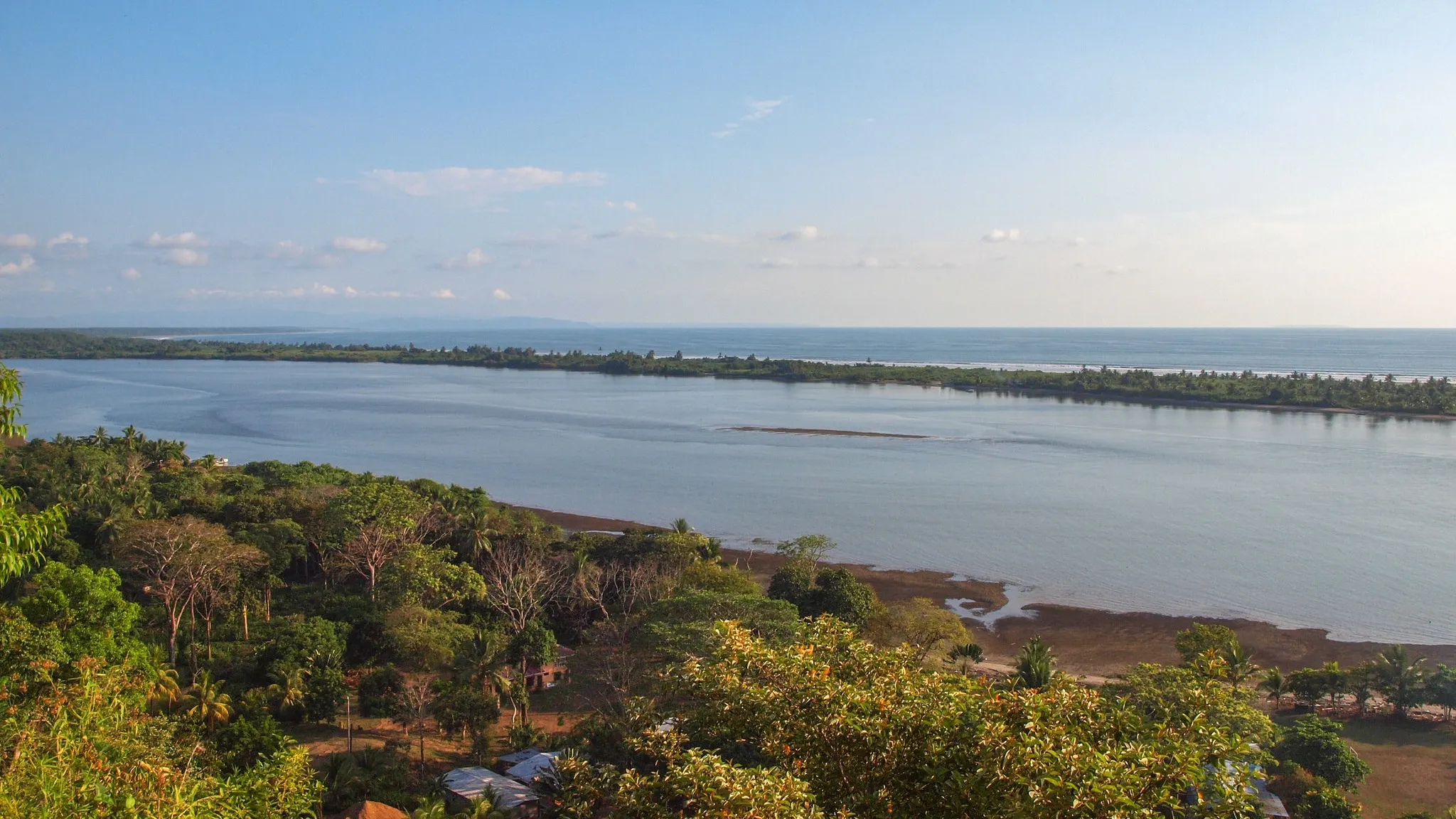
The Southern Zone used to be one of the most difficult places to access in Costa Rica. In the past, it was about a nine-hour drive from the capital, San José, but the coastal highway, which opened in 2010, cut the drive time to just over three hours.
The Southern Zone isn’t a place for luxury resorts, but you don’t have to go without modern-day conveniences.
For example, the charming town of Ojochal feels surprisingly cosmopolitan. There’s international cuisine and modern conveniences such as a doctor’s office, a dentist’s surgery, a gas station, a hardware store, and a supermarket.
Nearby is the Hospital de Osa, which has multiple treatment facilities, including a state-of-the-art emergency room, a pediatrics wing, and a neurology center.
Then there’s the Ballena Marine National Park, which is made up of four beaches, with Ojochal is Playa Pinuela being the best.
RETA Real Estate Expert Ronan McMahon’s Advice on Buying Real Estate in the Southern Zone
I’ve always appreciated the Southern Zone.
Here, you’ll find a bright, thick, green jungle canopy that rolls down to a coast of sandy beaches and rocky points. It’s truly stunning, extending down, south of Dominical to the border with Panama. It is an area of deserted beaches and virgin rainforest.
The trouble is there are so few places for people to stay in the Southern Zone. It's a big problem for me when I scout there. My team and I always struggle to find a rental, especially as we travel on fairly short notice when we hear of a potential deal.
But that could be about to change…
As access to the Southern Zone becomes easier, more tourists will arrive, leading to more hotels, bars, restaurants, and amenities. It’s a virtuous circle which will boost real estate values in the region.
My advice for anyone looking for bargain homes for sale in the Southern Zone would be to look for homes listed by expats.
You’ll be amazed how often how often expats need a quick sale and this means great opportunities for you, the buyer.
The Southern Zone has long been an area of interest to RETA. we continue to monitor the region closely both for potential new deals, and to keep up to date with any developments which can signal favorable market conditions on the horizon.
You can sign up with RETA here.
Free Access: Retire to Costa Rica Summit
Free Access: Retire to Costa Rica Summit
Join Us to Discover What Makes Costa Rica the Easiest Place on the Planet to Retire... and One of The Most Desirable Retirement Havens, too. You’ll see how you could join more than 70,000 Americans—many of them retirees, and those seeking an early retirement, but also families, veterans, couples, and singles that have already found Pura Vida (the Good Life) in Costa Rica.
Sign up for our free daily postcards, and you'll receive complimentary access to our Costa Rica Summit PLUS our latest research reports.

By submitting your email address, you will receive a free subscription to IL Postcards and special offers from International Living and our affiliates. You can unsubscribe at any time, and we encourage you to read more about our Privacy Policy.
